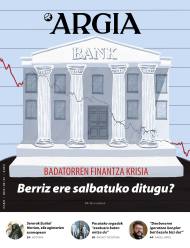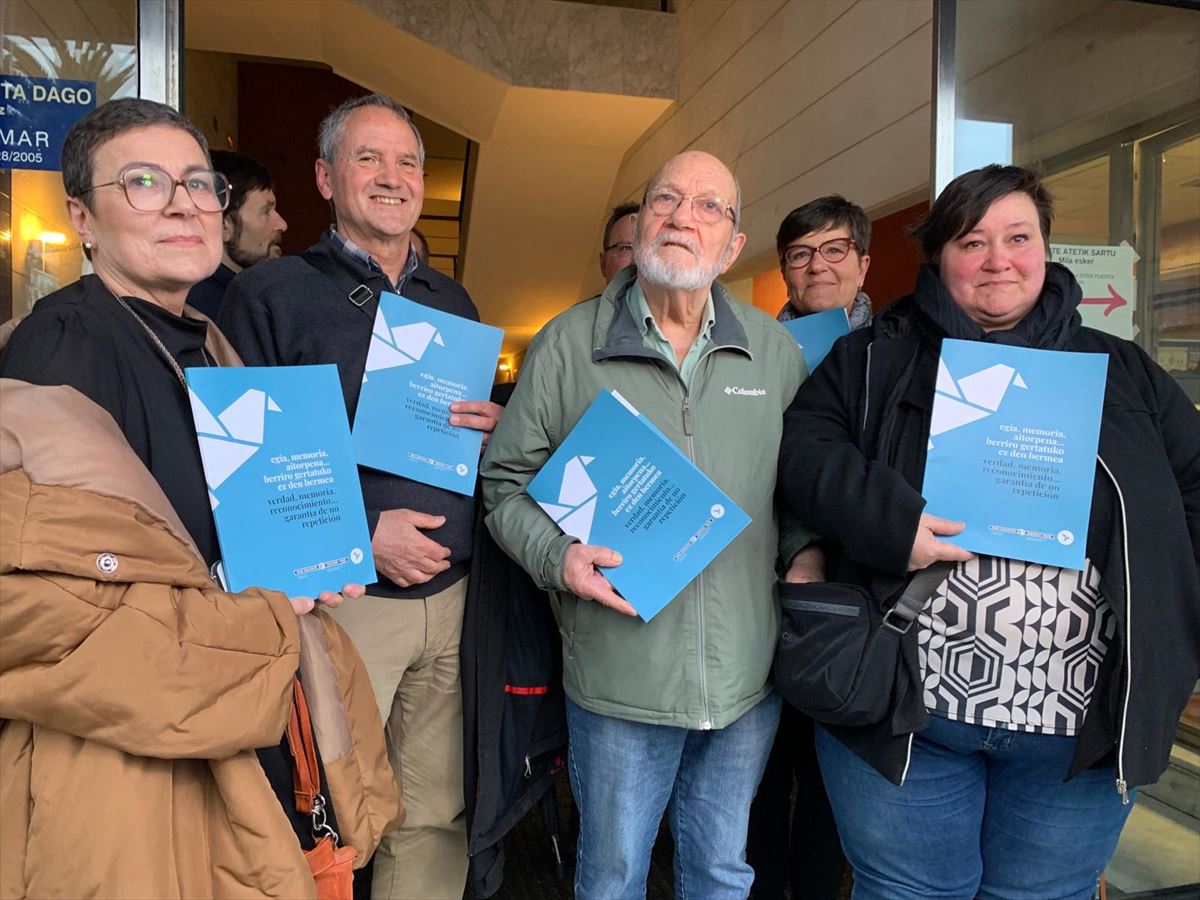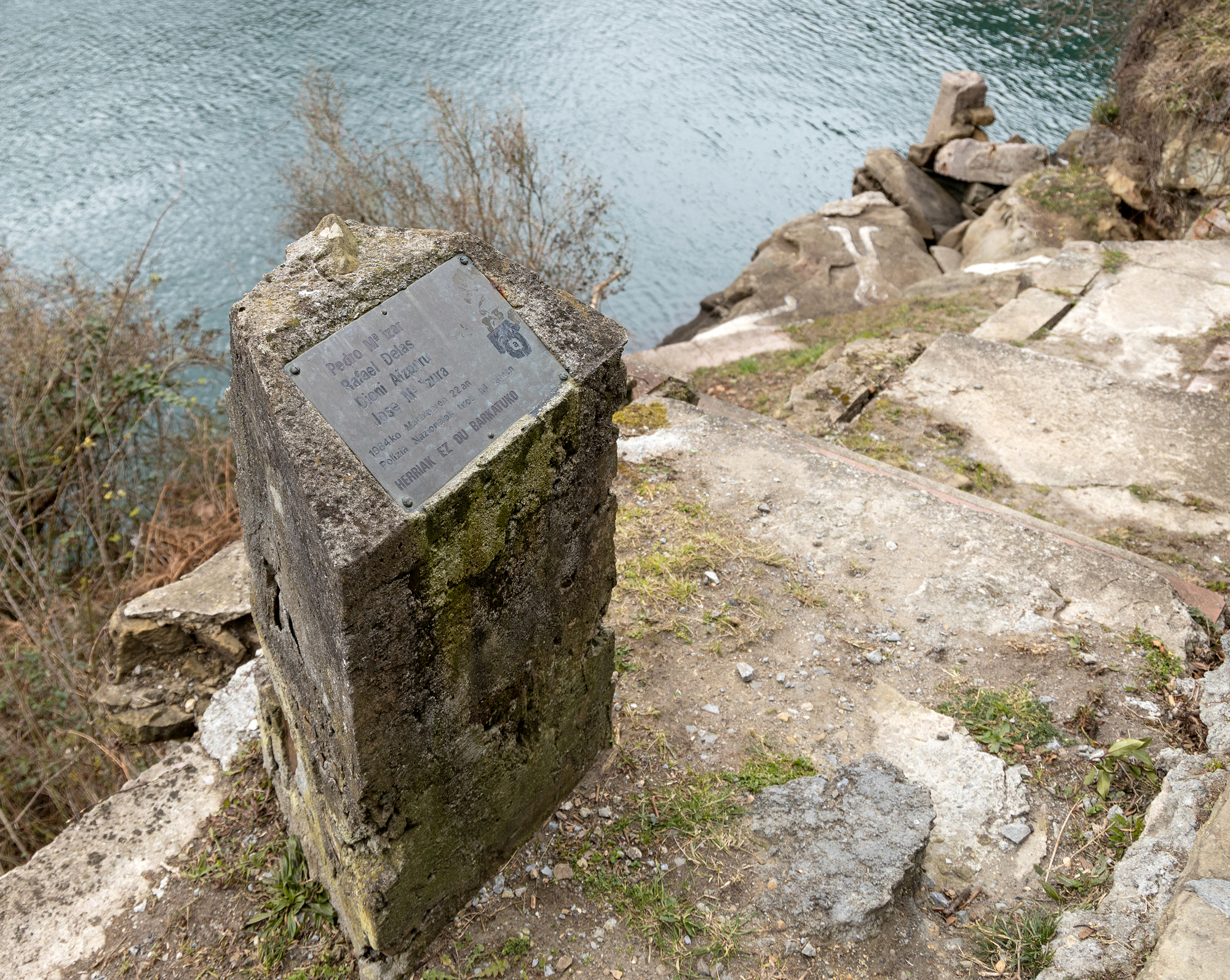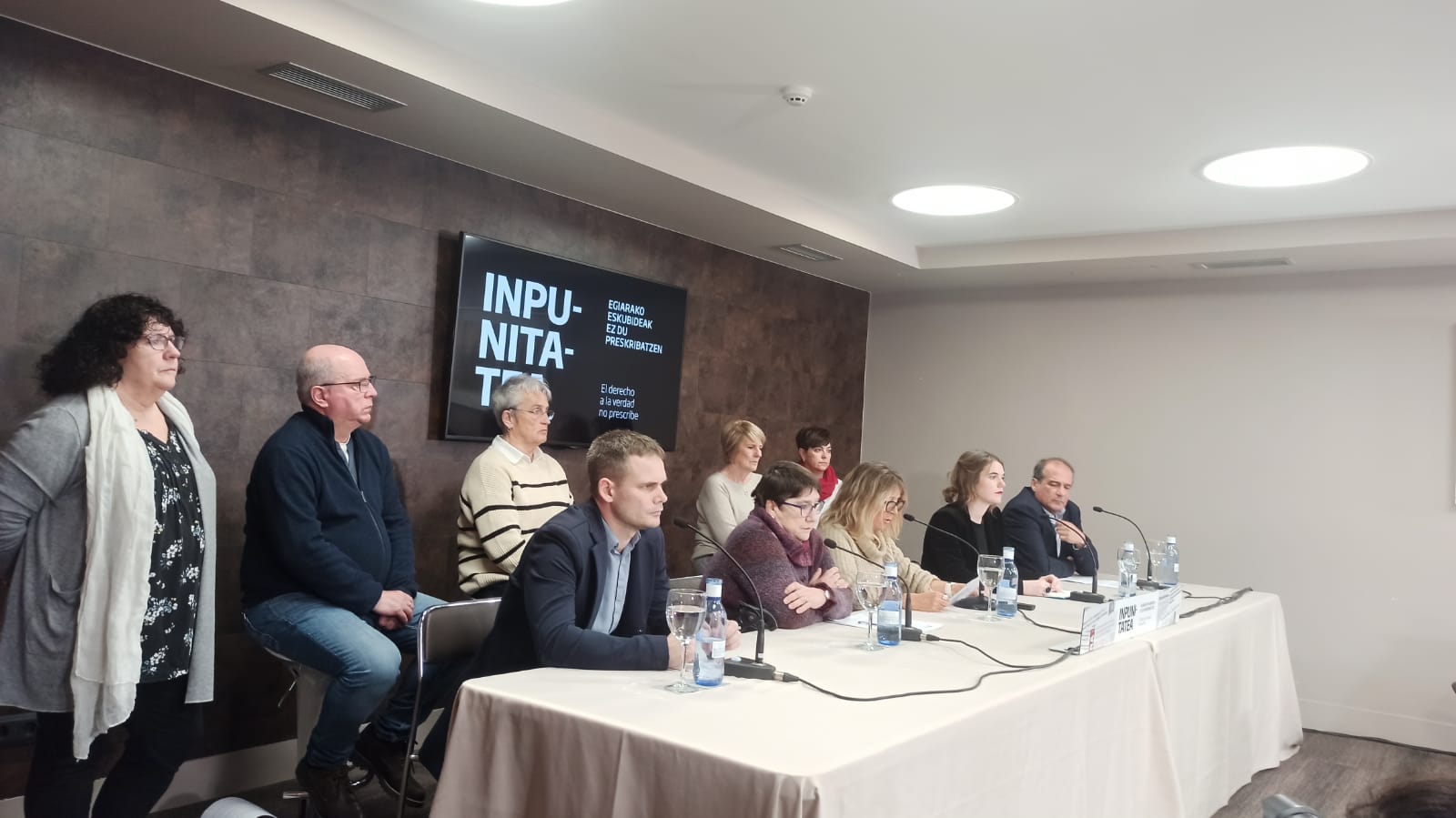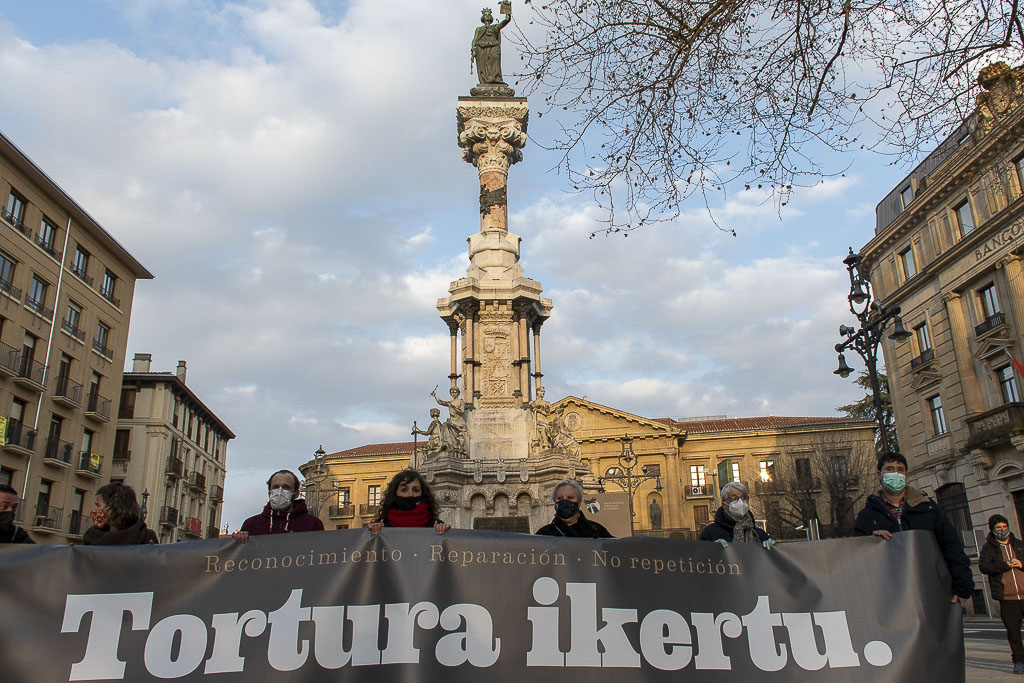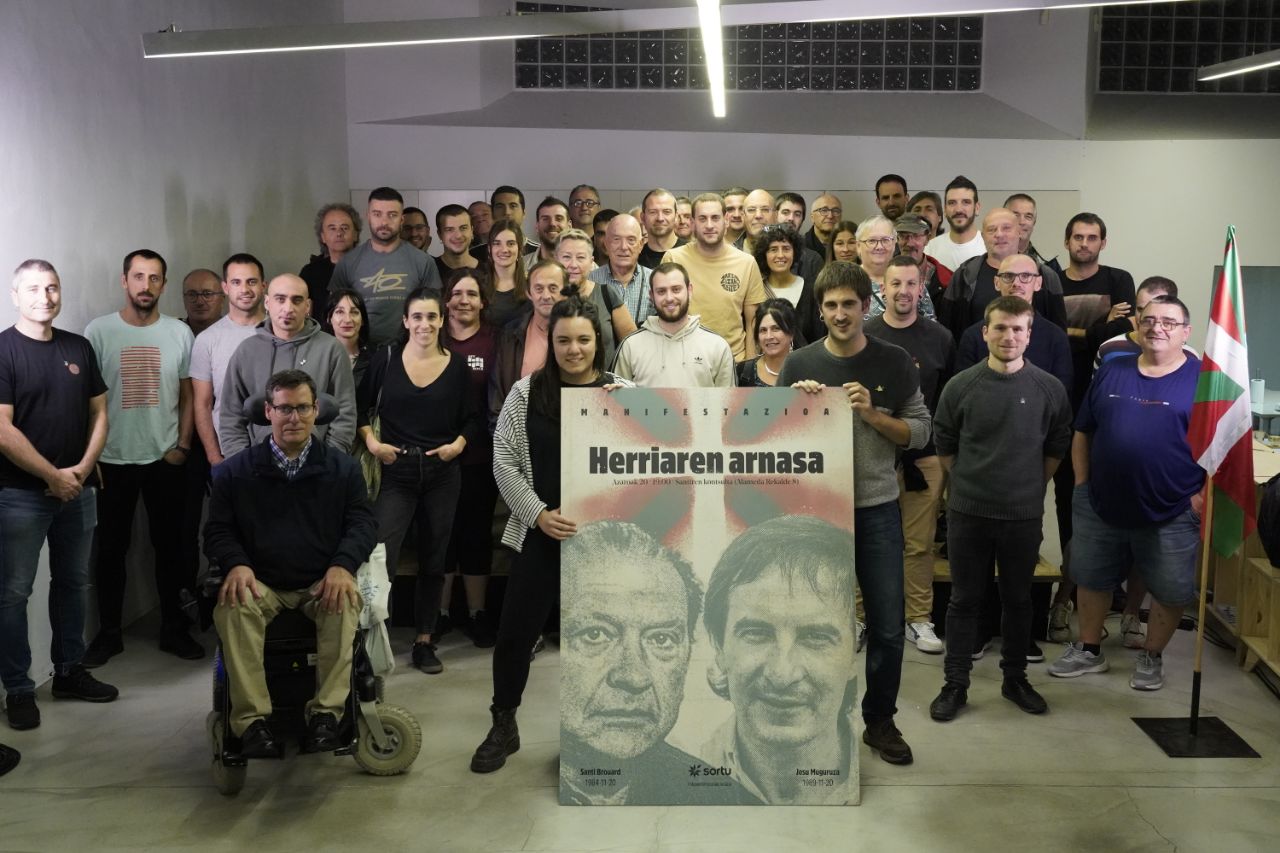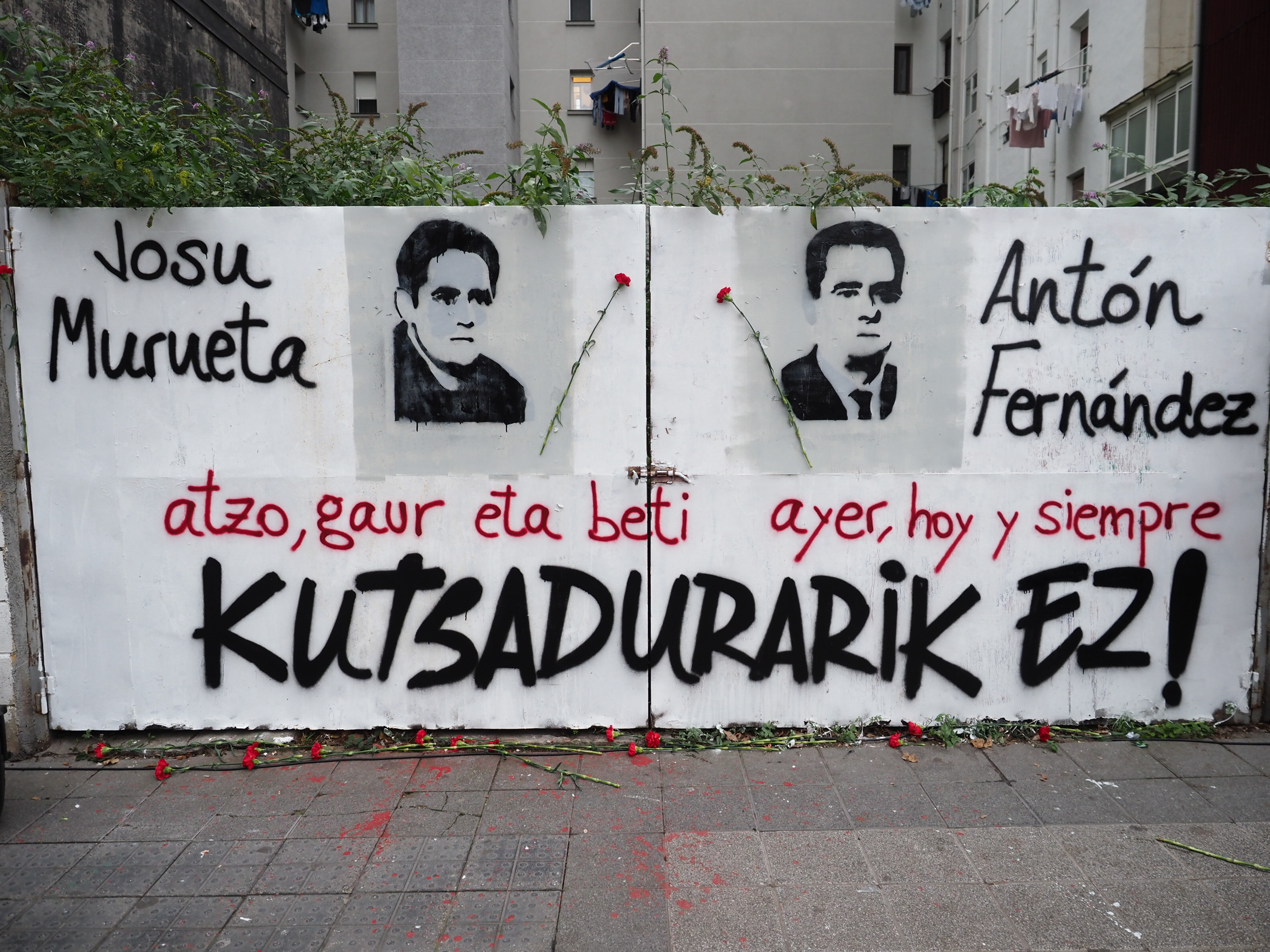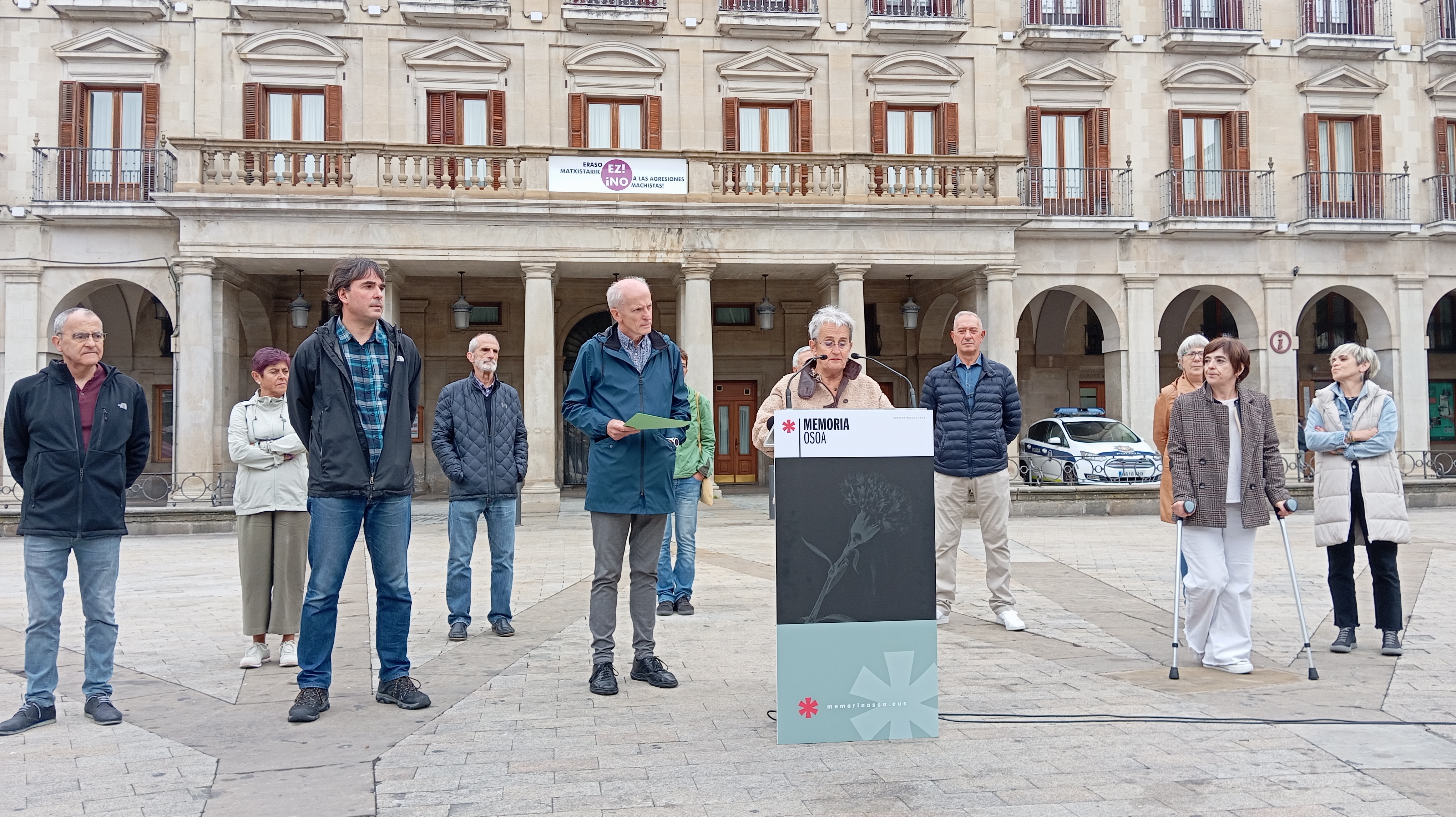“It looks like extrajudicial execution”
- On 22 March, 39 years of the murder took place in Pasaia Bay. The word “massacre” has also been used to refer to what happened in 1984. Recently ARGIA interviewed Pello Aizpuru Arbelaitz the brother of a deceased in La Segada, and despite his explanations, he still did not want to disseminate the report of a group of the UPV on the case.

Family members and members of the victims of the Pasaia massacre were taken by surprise by the report three years after its completion. The lehendakari of the Basque Government, Iñigo Urkullu, apologises for this. The UNESCO Chair for Human Rights and Public Authorities of the UPV/EHU was commissioned by the General Secretariat for Human Rights, Coexistence and Cooperation of the Basque Government. The report affected family and friends of the deceased. On the one hand, because of the content, and on the other, because the government has kept it for three years. The Chair, which has neither competence nor research capacity, has collected “as much information as possible in the light of available sources” on the current situation of the case. ARGIA has obtained the report and it can be seen that it consists of three main blocs: description of the facts, legal analysis of the legal action and paragraph of final conclusions.
On the same day of the massacre, he opened investigations in San Sebastian 2. The Examining Court, and also published
an edict requesting the hearing of witnesses or persons who could provide the data, “but it was not possible to voluntarily submit anyone” to the court.
The San Sebastian police station sent information to the court, describing the police device and defending the version of the confrontation. However, according to the report of the UNESCO Chair of the UPV/EHU, signed by the Chief Commissioner of the province and which appears to contain the seal of the Information Brigade, “no photographic or ballistic reports have been received on the gun and machine gun allegedly shot by young people, nor on the impacts of the projectiles (bullets) that, according to the police version, could be observed in the rocks. Nor was there a report on the identification of the police weapons used in the operation. In addition, it is not possible to rectify the police device and/or identify the agents who intervened in it, beyond the province’s general commissioner sending the information note to the judicial authority.” Of course, the information sent by the police station to the court did not indicate that the operation was conducted from Madrid, through the Spanish Police Central Information Brigade, with the collaboration of the Gipuzkoa Brigade, and the participation of the GEO special team. This special operations group was a few days earlier in San Sebastian, staying at the London hotel.
The consequence is that in July 1984 the case was filed and not reopened until May 2000, sixteen years after the massacre, at the request of the private indictment promoted by the family; subsequently, the Azpeitia City Hall was also filed as a popular indictment, with two out of four people killed.
The judicial route was
declared in January 2001 by Joseba Merino, in compliance with the sanction for various crimes charged as a member of the Autonomous Anti-Capitalist Commands, before the Court of Instruction of Gipuzkoa. He pointed out that Pasaia was a shooting.
In March 2001, Rosa Jimeno's statement at the same court. He denounced ill-treatment and torture and said they used it as a lure. Two witnesses were also declared on the Pasaia Lighthouse walk at the time of the massacre. The report points out that the last two testimonies “do not confirm or deny the Police’s version, nor explain why they arrested the couple an hour earlier, put the mockery on them and had them lying on the ground”, nor the hardness with which they did not see operational.”
In October 2001, the Provincial Prosecutor’s Office of Gipuzkoa requested the court to carry out two proceedings: on the one hand, the identification of the officers who had intervened in the police system and, on the other hand, the request for the report of weapons carried by the command and a ballistic report on them to the police. Regarding weapons, the Police declared the 5th Instruction. They were referred to the Central Court and the ballistic report would be sent to the court once it had been prepared. As for the report, “...the police and judicial investigation does not contain any evidence of the use of weapons confiscated by young people; the photographic report does not contain the alleged bullet impacts on the pretil and stones, and there is no evidence of a ballistic report of shots. Nor did the efforts to find the photographic report mentioned in the visual inspection record in the police State, where the agents of the Identification Brigade of Gipuzkoa announced “a photographic report of the place where the controversy occurred and of the cadavers that appeared.” The report addresses this point with “numerous attempts to recover both documents, without the police being able to enter the investigation.”
“It is unreasonable to recognize the impossibility of accurately identifying the authorities that governed the Pasaia operation and that participated directly or indirectly” Report of the
UNESCO Chair of the UPV/EHU
Four officers in December 2001, at the request of the court, the Provincial
Police of Gipuzkoa responded that, according to the proceedings of the Central Information Brigade of Madrid, four officers participated in the Pasaia Police. The reference police station also reported its four professional numbers, “the four agents were called by the Examining Court as imputed”. In parentheses, it was pointed out that in May 2001 the particular accusation had requested the statement from the Chief Commissioner of the Provincial Information Brigade at the time of the events, “to clarify the contents of the information note and identify the agents involved in the operation. This request was repeated in September and December 2001 and again in February 2002.” They had to wait eight years, until 2009, for the court to respond to this request and call the head of the Provincial Information Brigade.
On 6 June 2002, the four officers identified by the Directorate General of the Police appear before the Examining Court. They stated that “nobody participated directly in the facts investigated, some located in Pasaia San Pedro far from the shots, and that only one of them was around the rock where the shooting occurred, but did not participate directly”.
In November 2002, the police station in Gipuzkoa was again asked to identify the other police officers involved. The San Sebastian police confirmed the absence of other officers.
In February 2003, the relatives of the victims requested the Spanish Police to provide the identity of the police operation, of the material authors of the shooting and of the other intervening agents, warning them that, if they impeded the instructive work of the court, they could incur criminal liability. In March, the General Information Commissioner reiterated the final answer: “There is no more data”.
24 June 2004, 2nd Instruction. Court order: decide to file the investigation on the basis of a statute of limitations. On
April 18, 2005, the Provincial Court of Gipuzkoa rectified the criterion of the Examining Judge, estimated the appeal and ordered the continuation of the investigation, considering that the crime had not been prescribed.
September 2005. 2nd of Donostia-San Sebastián Providencia of the Examining Court agreeing to collect the statements of the agent who ordered the device, that is, of the Head of the Central Information Brigade Service, as well as of the former Chief Commissioner of San Sebastian, and the receipt of the declaration of witness by the Chief Commissioner of Gipuzkoa, accompanied by all the documentation related to them. The Commissioner of Gipuzkoa appeared in November 2005 and stated that at the time of the events he was not appointed in Gipuzkoa and did not intervene in the device. You can extend the chain as much as you want. The obstacles are as much as the observable ones to identify the agents… The difficulties lasted until the investigation was recovered, until the investigation proceedings proposed by the accusations were denied.
2014, book by
José Bono 2014. Words of the former Spanish minister and former president of the Congress of Deputies about the fact of Pasaia “in a way that suggested extrajudicial execution”, as highlighted in the report of the UNESCO Chair of the UPV. Consequently, the representation of the relatives of the four dead requested the citation of Bono along with that of Joaquín Leguina to declare the signs of a political operation to avenge the murder of Senator
Enrique Casas.
July 2015. The Examining Court dismissed this diligence and on appeal it ratified the agreement.
Order of 2 February 2016: the court agreed to the provisional filing of the proceedings and the Provincial Court of Gipuzkoa confirmed the resolution on 20 June of the same year. Accordingly, he closed the ordinary court case. 2nd Instruction The court found the existence of four crimes of homicide, while stating that its authorship was not duly justified: “Throughout these 32 years the entire route of investigation has been exhausted and, besides being complicated, it has been difficult considering that the time has passed and that there is no documentation in the files requested”.
“It is clearly concluded that there is no proactive attitude to encourage judicial investigation” Report of the
UNESCO Chair of the UPV/EHU
Nor did the appeal filed by the indictment before the Spanish Constitutional Court in 2017 thrive, claiming that the appeal was filed late. The UPV/EHU report prioritizes “Therefore, it did not care about the substance of the case, nor did it pronounce on the numerous violations of the right to effective remedy reported in the remedy of amparo”.
29 November 2017. After the courts in Spain, the City of Azpeitia appealed to the European Court of Human Rights. It did not go ahead because the Azpeitia City Hall “does not have the status of victim of the breach of the alleged agreement [European Convention on Human Rights]”. Argument: That the City of Azpeitia is not, nor does it represent, a signatory State or a High Contracting Party to the European Convention on Human Rights.
.jpg)
Conclusions and recommendations
are conclusive. Regarding police action: “It is not reasonable to recognize the impossibility of accurately identifying the authorities directly or indirectly involved in the operation of Pasaia (…) the General Directorate of the National Police identified only four officers, none of whom participated in the facts investigated, nor provided any useful information to identify those responsible. (...) it is significant that both authorities know nothing or do not remember the identity of another person participating in the operation.”
As for the Administration of Justice, the report states that “it is clearly concluded that there is no proactive attitude towards encouraging judicial investigation” and gives three firm reasons. On the one hand, on 27 June 1984, just three months after the events had taken place, completion of the investigation, without the dark ones being clarified. Or without making any effort. Moreover, at the request of the private prosecution, following the 1986 declaration to Rosa Jimeno and Joseba Merino, the Prosecutor ' s Office did not conduct any investigation. The case remained paralysed until 2000.
“[Constitutional Court] did not issue a report from the UNESCO Chair of the UPV/EHU on the numerous violations of the right
to effective judicial
protection reported in the amparo appeal”
Finally, he insists on summarizing the reports: “The autopsies, the four bulletproof young people do not have the proof of having used weapons, the contradictions evident in the official report and the testimonies and peripheral data that objectively question them, and the refusal of the police authorities to explain the identity of the agents responsible for intervening and/or organizing the events, as well as the repetition of all the factors of delay, obstruction and manoeuvre.”
Accordingly, recommendation, “report this report” and study on the feasibility and desirability of the General Secretariat for Human Rights, Coexistence and Cooperation of the [Basque Government] filing a complaint with the Commission on Human Rights of the 1966 International Covenant on Civil and Political Rights.
To forward a copy of the report to the Ararteko, the Commission on Human Rights of the Basque Parliament, the Duro, the counterpart body of the General Secretariat of the Government of Spain, the General Council of the Judiciary, the Ombudsman of Spain, the Commissioner for Human Rights of the Council of Europe and the Special Rapporteur on extrajudicial, summary or arbitrary executions.
As Irati Irazusta Jauregi wrote on 23 March in ARGIA, the case is now open and, as it is open, “they cannot name the four dead victims of state violence, because Basque law does not allow them to do so during the opening of the investigation.” Blind road that once lights up and reaches the head.
Azken astean ezagutarazi moduan, Eusko Jaurlaritzaren Balorazio Batzordeak txosten banatan aitortu ditu estatuaren biktima gisa. Justizia sailburuak ekitaldi pribatu banatan entregatu dizkie dokumentuak.
Espainiako Poliziak duela 41 urte hil zituen tiroka Dionisio Aizpuru, Pedro Mari Isart, Jose Mari Izura eta Rafael Delas gazteak, Komando Autonomo Antikapitalistetako kideak.
GALeko biktima talde batek eman du kereilaren nondik norakoen berri Bilbon egindako prentsaurrekoan, Egiari Zor fundazioak eta Giza Eskubideen Euskal Herriko Behatokiak lagunduta. GALen aurkako eta, zehazki, José Barrionuevoren aurkako kereila aurkeztuko dute.
Nafarroako Gobernuak ofizialki aitortu ditu gure lurraldean giza eskubideen urraketa larriak jasan zituzten Estatuaren indarkeriaren beste zazpi biktima. Horien artean, hitzez hitz “motibazio politikoko biktima gisa” aitortzen ditu Patxi Erdozain, Eneko Compains,... [+]
2008an Fernando Grande Marlaska epailearen aginduz atxilotu zutenean Ibai Azkonak pairatu zituen torturak aitortu ditu Nafarroako Gobernuak. Euskalerria Irratian, pauso honek suposatzen duena azaldu du Azkonak.









